Interview: In The Studio With Wan Hung Cheung
By Something CuratedFollowing Wan Hung Cheung’s graduation from Central Saint Martins, and experience working with labels including Tom Ford, John Rocha and Bernhard Willhelm, the designer founded Wan Hung in 2014. Clean-cut tailoring and classic silhouettes, reinvented through textile and print innovation, are central to the brand. Cheung was born and grew up in Hainan, often described as the Hawaii of China, boasting year-round holiday weather, coconut palms, gold-sand beaches and inland rainforests. The juxtaposition of Hainan’s natural beauty with the present day urban experience underlies the label’s ethos, bringing a piece of paradise into the luxury menswear wardrobe of today. Wan Hung has showcased collections at London Collections Men since 2015 and was selected as a part of the Lane Crawford x Swarovski ‘Vision from a New Generation’ exhibition in October 2015. Something Curated met with Cheung ahead of London Fashion Week Men’s, at his Dalston studio, to learn more about the label, the designer’s approach to business, and what he has planned for AW17.
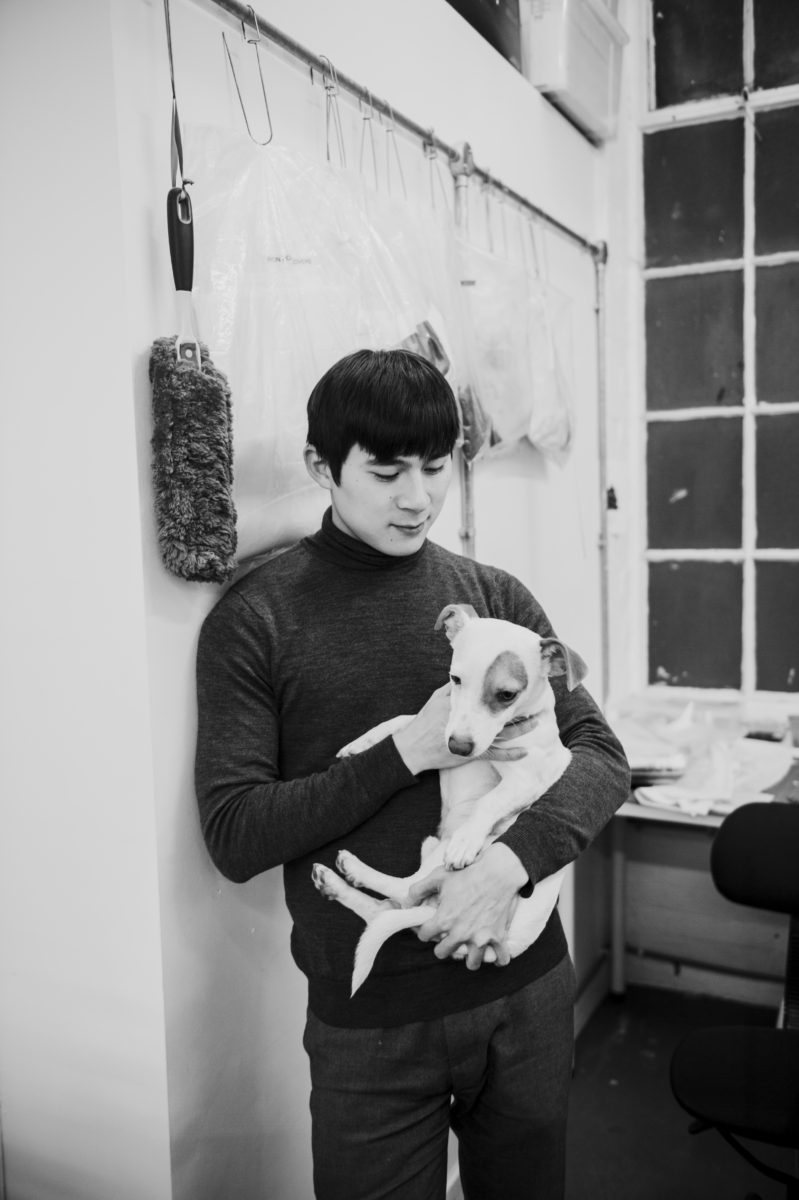
Something Curated: How did you get into this field – is fashion something that’s always interested you?
Wan Hung: I was inspired by Tom Ford to be a fashion designer when I was 12 years old. His collections at Gucci were so great. He transformed those women into something so sexy. It was quite a bad time for Gucci as a company so the way he thought about things and what he did brought the brand back to life again. I said, “Oh my god, fashion isn’t just beauty and glamour and design – it’s about business as well.” So I thought this was a good career, you know? To make the clothes and people look great but also make money.
SC: How important do you think it is for designers to be conscious of the business side of things?
WH: It’s definitely important. I mean, once you start to do a label it is a business already. You have to think big and deep about so many things, like hiring a team who you get along with, because they are the soul of the company, to help you out, to develop the ideas, to make it all happen. I’ve got my studio manager who’s in charge of accounting and sales; my textiles designer Angela who is helping with the patterning today; there’s Linda who is our pattern cutter; Barbara who was an intern, but is now working with us as pattern assistant; and two lovely interns. But somebody has to pay for this of course! So you need to make money in order to continue to dream and get your voice heard.
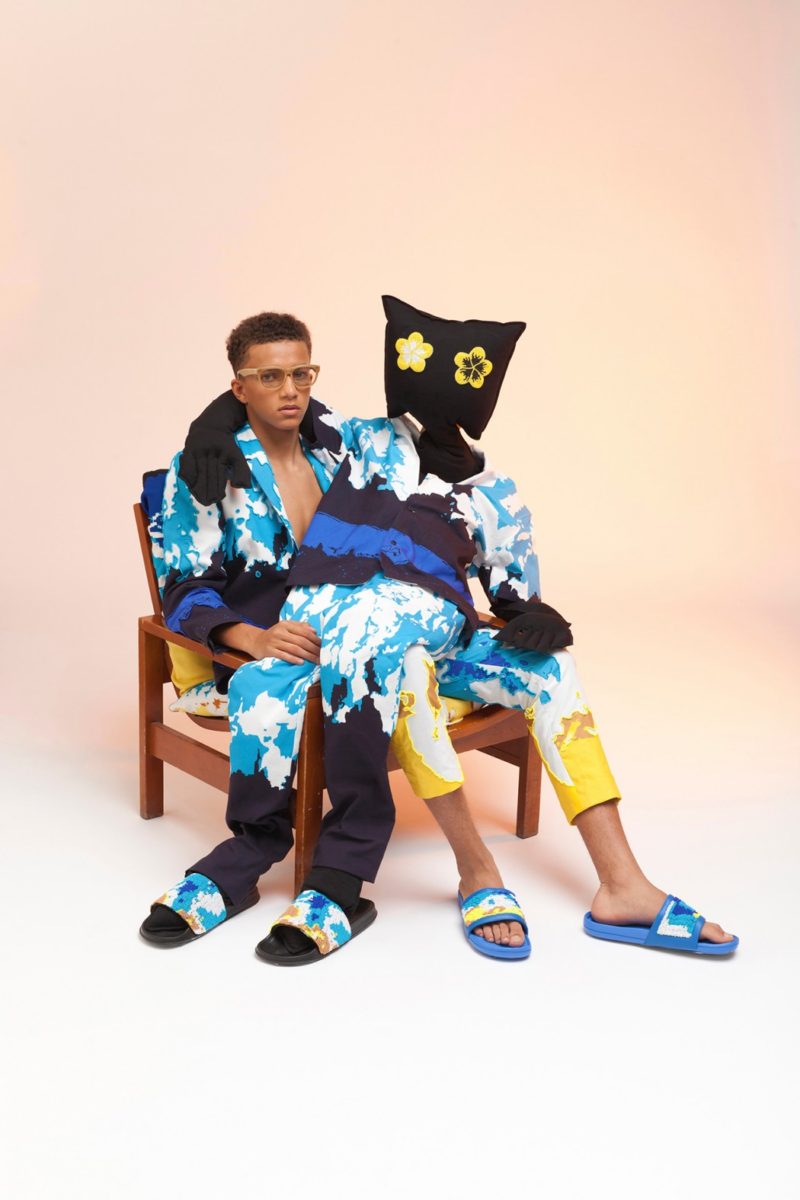
SC: How did coming to London and your time at Central Saint Martins help shape you?
WH: Coming to London by myself wasn’t daunting – it was exciting. I was so excited to go to CSM and pursue my dreams. London felt new to me, even though Hong Kong is pretty similar. London is different though, a city that has people from all over the world, so I didn’t feel lonely. When I got to London College of Fashion, I did a year in womenswear and luckily I learnt a lot of technical things like pattern cutting, sewing and other skills that you need as a designer. But I really wanted to go to CSM, so I applied and got in. It was an amazing collaborative experience. I got to work with Liberty to do print design for them and won a prize for that. We got to collaborate with Grayson Perry too and he bought one of my dresses as well. The way the university pushes the students, to be bold and think outside the box – to stop thinking about being commercial for example – but to do something people haven’t thought about before. It’s about being true to yourself and how to be a creative director, not just being a designer.
SC: What has the journey been like since leaving university?
WH: I left in 2014 and it’s been really freeing. No more deadlines for projects, staying late to finish university projects, thinking about what tutors think about my work. And I thought, finally, I can make my dream come true and launch my own label.
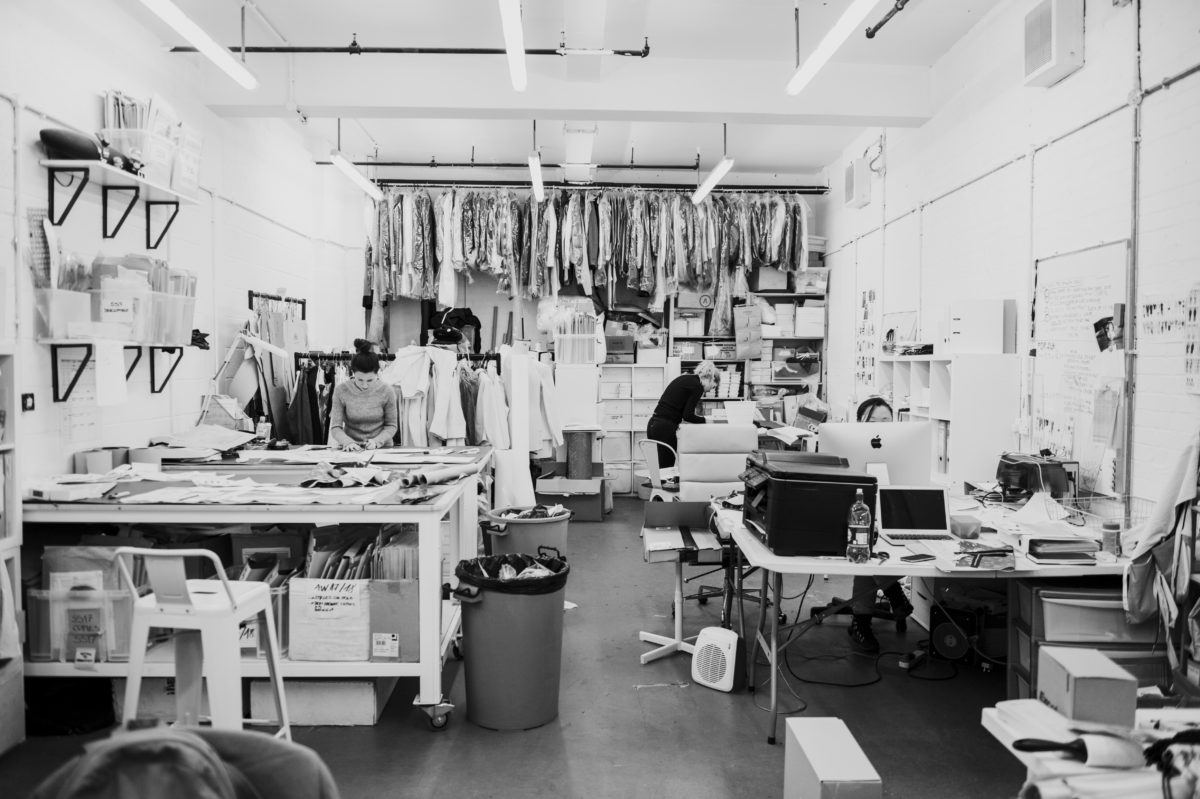
SC: Do you find there is a different kind of pressure now you have your own label?
WH: It’s much bigger. I was quite naïve to think that is was all beautiful designs and not think about sales. After investing money into one season, I knew the creativity was there and people liked it, but then I thought that there were no sales – because I didn’t know how to work with the manufacturers or how to build up a team. Basically, back then, I knew nothing – just about design and creativity. And a season later I was like, “Shit, I really need to make this work. I don’t want to become that designer who does their thing for a few seasons and then disappears.” After the business started getting bigger, getting orders from overseas, I started thinking business was really interesting. You have to think about what people want to wear, about sales, about what the press wants to see and what celebrities want to wear. There’s a lot of thinking. It’s not just being creative then – you need to be a smart creative person, a person who can make it work as a whole.
SC: What have been the biggest challenges of setting up your own label?
WH: The business side of things, as I said. Frankly, you need money. You need funding. So, with a healthy cash flow, you can basically make it happen. It doesn’t matter if you have a great idea because without the business side of things, those ideas are just redundant in your mind, they’ll stay there. There’s so much to think about, how to deal with your team. You can’t stay inside your creative bubble. You need to work as a team, as a family.
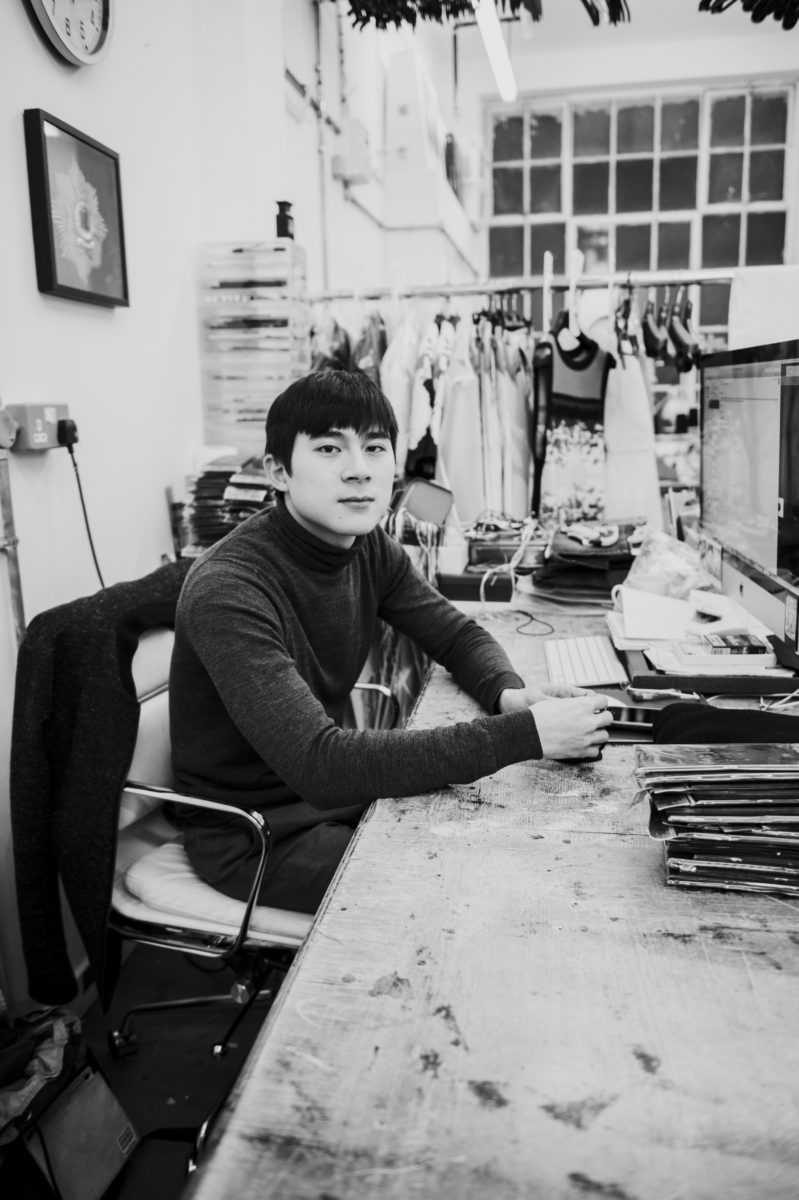
SC: How would you describe the ethos behind your label?
WH: Well, it all comes from Tom Ford. He did garments, then expanded into perfume and makeup – that’s how a company really makes money. When you think Ford, you think glamour and good taste. But to create this kind of label takes time. Good things take time. My vibe is really aimed at luxury clients, for mature people. I see my clients being 25 to 40.
SC: What influenced your SS17 collection?
WH: I’m an ocean boy. People call Hainan the eastern Hawaii, because it’s got the ocean and it’s full of coconuts. The ocean is my second mother. And to be honest, I have really never had the chance to take a proper vacation, to go back and see it. I got really homesick about this and so I started painting the ocean. All the prints you see on the SS17 work in the studio are based on my paintings. We took those acrylic paintings and turned them into digital prints and then transferred them onto the garments. It has this vacation vibe now. But we made the paintings more pixelated on the garment, not so obvious, but still an interesting way of looking at the ocean. The process is curious too. I do all the original artwork and then I describe it to Angela, my lovely textile designer, who helps to transform the digital prints by contacting the print people, to bring the ideas to life.

SC: How does your clothing challenge the norms of menswear? Do you see menswear and womenswear as binary, or as areas that inform each other?
WH: Alexander McQueen used to say women should be women. To be feminine. And with that idea in mind, men should be masculine. I don’t mean men should be physically masculine, but their look. What I’m trying to do is bring colour into it. Colours are so important to me. I want to make colourful tailoring, to make people accept it. Ever since my first season, I’ve always wanted to combine my ideas and see if I can get people to accept them. Suits are already quite a narrow market. How can we challenge the market and get people to accept this, you know?
SC: Could you tell us how your brand has evolved from SS15 to now?
WH: The label is menswear but I actually studied fashion print at CSM. My tutor thought my menswear design was better than womenswear and pushed me to go in this direction. I thought, okay, great, why not? Womenswear was already so competitive, but to me menswear still felt new, that it was there to be challenged. I started thinking about sales and then last season there was this explosion. I really needed to be myself and couldn’t repress it anymore. And then there’s Fashion Week – it never really stops. You need to do so many collections in a year and there are so many Fashion Weeks happening right now in different countries – it’s all quite intense. So I want to make something that is chilled and relaxing, something fresh. Fashion doesn’t have to be bang bang bang, deadlines and intensity. I feel like I have much, much more control now.
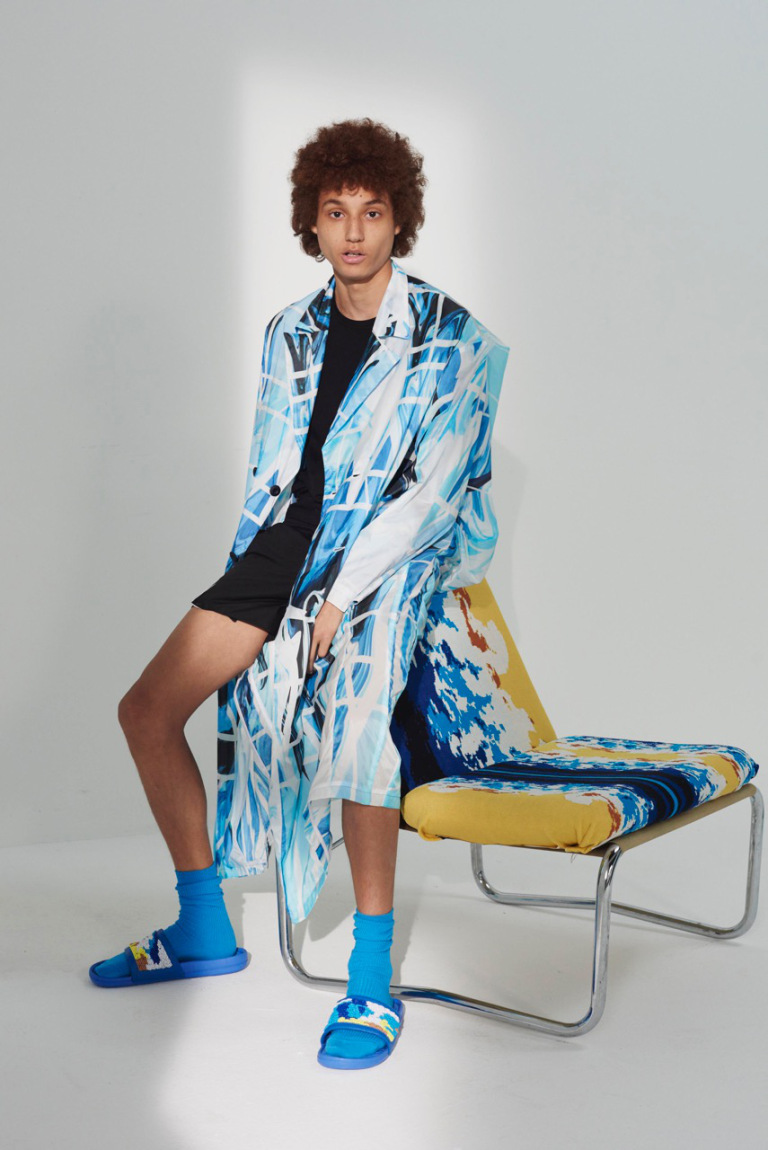
SC: Tom Ford, who you’ve mentioned is an inspiration to you, moved on to other mediums such as film – do you think you will ever traverse into other areas?
WH: Once my fashion label is stable, I would like to get into product design and from that do some furniture and maybe in ten or twenty years own a hotel. I’m from Hainan, and it’s all about travelling. When it’s winter in China, people go to Hainan because it’s warm and there are loads of hotels there. It’s something I’ve experienced since I was a kid. But these things take time. I just need to make this happen first.
SC: Can you tell us what you have planned with your forthcoming collection?
WH: I’m working on the AW17 at the moment. So we’re continuing to do prints but even bolder now. So last season was about bringing my hometown into it, getting people to know about Hainan. This season we’re continuing with that and really bringing seafood into it along with the Chinese New Year. I would say blue and red are the branding colours, but with different shades of it. And because of the Chinese New Year element, we’re adding a lot of gold and silver too.
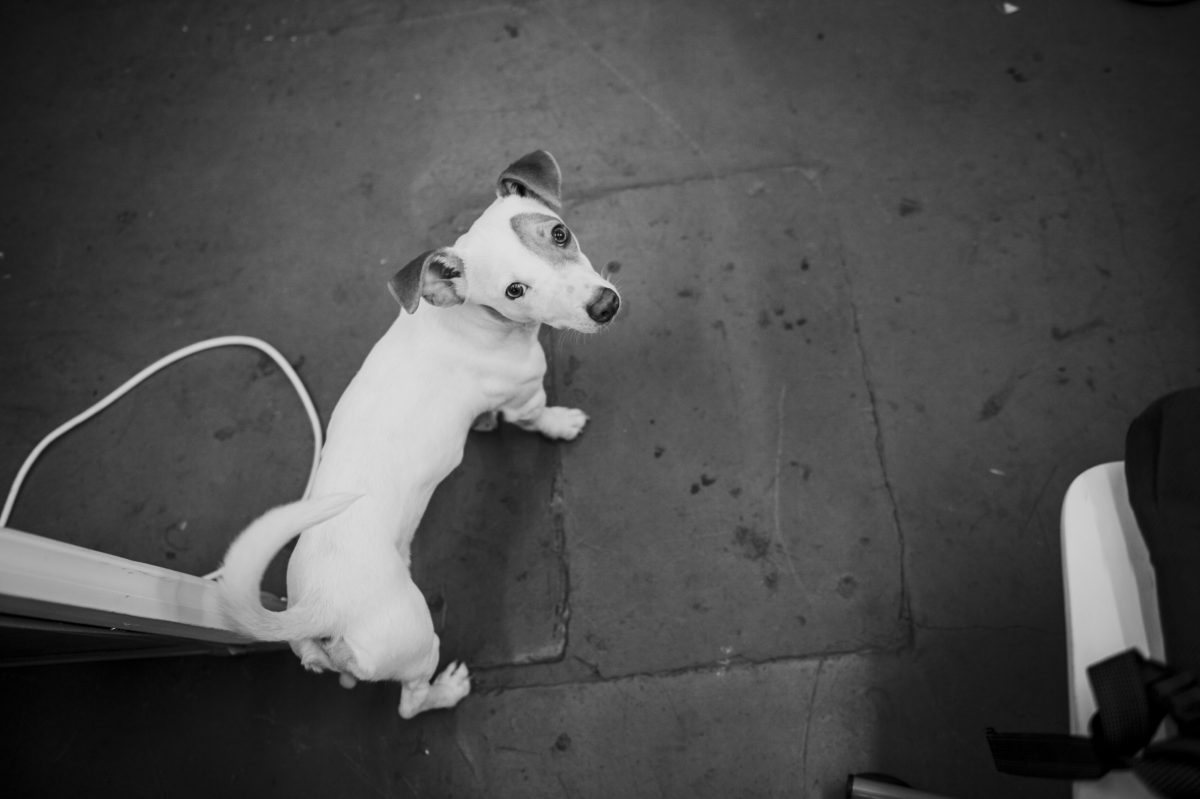
SC: Are there any designers in the industry that you particularly like?
WH: Thom Browne, John Rocha, Simone Rocha, Bernhard Willhelm and Tom Ford.
SC: What does London, and Dalston in particular, offer you as the site of your studio?
WH: The vibe in Dalston is interesting. I like the bringing together of diverse cultures. I used to intern here for Simone Rocha for two years. So basically her studio was in the same building but upstairs. My first studio was actually hers, because she left. So I interned there, then had that studio. It’s great here.
SC: What advice would you give to aspiring designers?
WH: Think clearly if you really want to do a label. And people like Anna Wintour, they all suggest that you should work first, really understand the industry because it’s so different to school. Understand the industry so you’re not blind. Get a job, definitely. Although I interned for some good brands, I never really worked for a person. When I started my label then I struggled for a while.
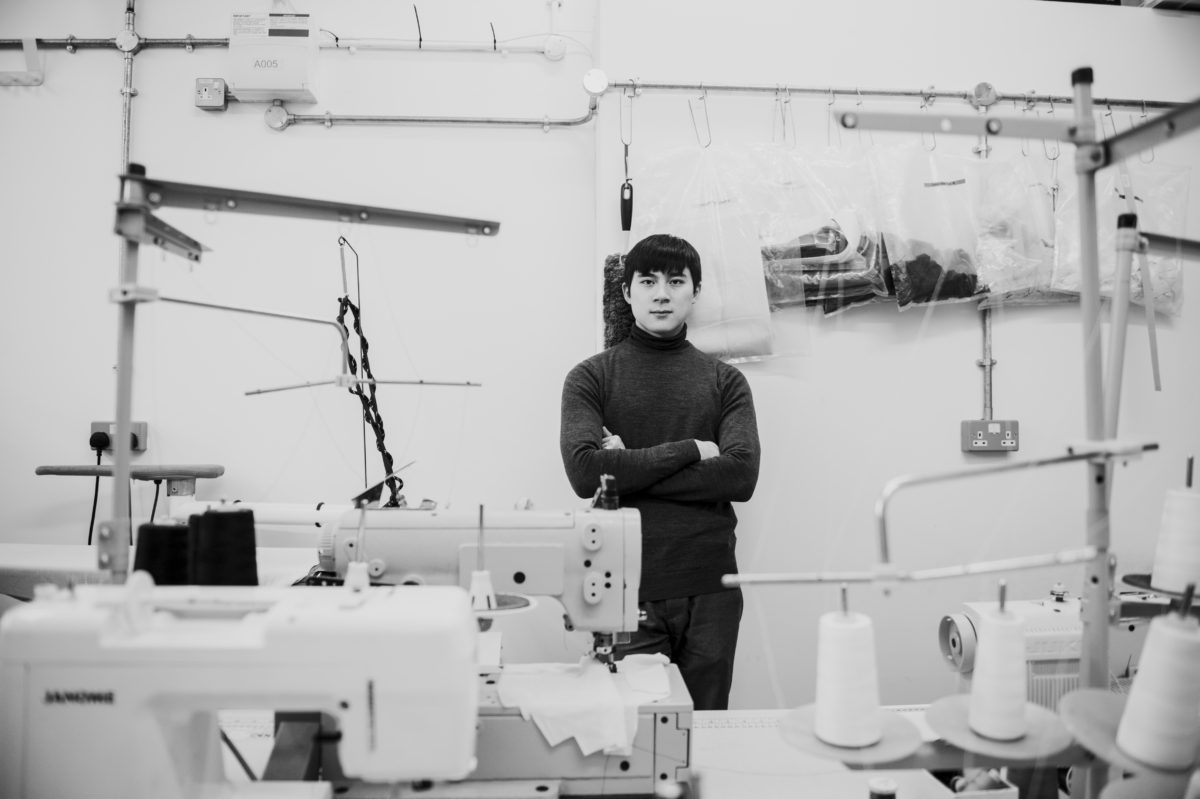
SC: Where do you live in London and what drew you to the area?
WH: I’m living in Angel at the moment. It’s a really nice area and there’s the canal, so you can just run there and I can get to work easily.
SC: Favourite place to shop in London?
WH: Dover Street Market. It’s really good. They buy good pieces and the building is really interesting. When you shop there, there aren’t many people in there. You can enjoy your time in there and the staff are nice too. They don’t pressure you to buy anything.
SC: Favourite restaurant/bar in London?
WH: I eat a lot in Chinatown and recently I discovered Park Chinois in Mayfair. It was introduced by Andrew Davis and the décor there is amazing and the food too. They cook really good traditional Chinese food.
SC: Favourite place to relax in London?
WH: Home.
SC: Where would you live if not London?
WH: Somewhere next to the ocean, kind of like where Samantha lives in the Sex and the City movie.
Interview by Oliver Zarandi | Photography by Steph Wilson